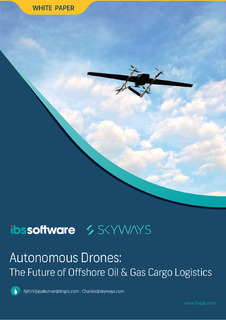The oil & gas industry is evolving fast in response to 'lower for longer' crude oil price levels, changing energy mix, decarbonization, and non-traditional competitors. Operators are challenged to generate more margins per barrel through technology innovations for the economic recovery of oil and gas resources. Unmanned Aerial Vehicles (UAVs) or drones are utilized by the oil and gas industry for remote monitoring, surveillance, inspection, and predictive maintenance of critical infrastructure assets at onshore and offshore work environments. Emerging innovations in autonomous drones could realize cost-effective cargo deliveries to offshore drilling and production units in the near future.
The first FAA-approved Beyond Visual Line of Sight (BVLOS) drone flight in the US in August 2019 is a big step towards making drone deliveries a reality. Machine learning algorithms can continuously process the video footage to help drones know their own speed and detect obstacles to reach their exact target position and make it a completely autonomous system. The supply chain disruption caused by the Covid19 pandemic has further reinforced the potential opportunities for autonomous drones for offshore delivery of cargo.
This white paper explores the latest cutting-edge drone technologies, future direction, key business drivers, opportunities, and challenges for oil & gas operators to enable safe, efficient, and cost-effective offshore oil & gas cargo logistics operations.


